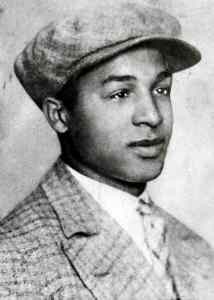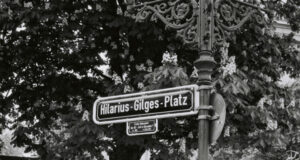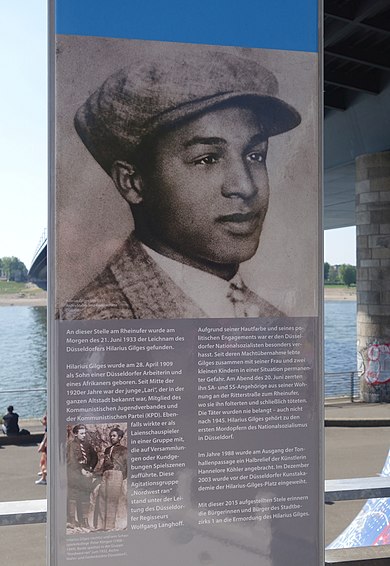Hilarius Gilges is the most well-known Afro-German activist who fought against the rise of the National Socialist German Workers’ (Nazi) Party in the early interwar period.
The son of a textile worker named Maria Stüttgen and an African boatman working on the Rhine, Gilges was born in Düsseldorf on March 4, 1909, and took his stepfather’s name after his mother’s marriage to a German man in 1915.
Growing up mixed-race and working-class in early twentieth-century Germany was difficult. Gilges suffered insults and discrimination because of his color. Perhaps because of this, he joined the Young Communist League of Germany (Kommunistischer Jugendverband Deutschland (KJVD), the youth wing of the Communist Party), founded in 1920 and had a membership of 70,000 by 1923, two years before Gilges joined.

Source: Wikipedia.org
Gilges was a talented tap dancer and theater actor, and in 1930 joined a theatrical troupe called the Nordwest Ran, directed by the esteemed actor Wolfgang Langhoff. Performing on a mobile stage mostly at union events, “Lari,” as he was fondly known, and fellow Communists conveyed to audiences the advantages of revolutionary, scientific socialism in opposition to the bigotry and inhumanity of the Nazi agenda led by Adolf Hitler. The real threat that Hitler posed encouraged them to engage in more street demonstrations and protests. Following the election of the Nazi Party to power in 1933, the Communist Party, like other political rivals, was banned.
Prior to the Nazi victory, the KJVD was highly active in Düsseldorf. In 1931 at a massive demonstration at Marz-Gedenfeier, Gilges was lured into a fight with right-wing agitators and was arrested by police sympathetic to his attackers. The local court sentenced him to a year in prison. Upon his release in 1932, which happened to be the election year, Gilges threw himself back into political work. He crisscrossed the lower Rhine region warning people in numerous towns about the dangers of Nazism.
His skin color and politics made Gilges an easy target for his enemies. Following the Nazi political triumph in 1933, communists were rounded up and imprisoned. By now, a married man with two children, Gilges was keenly aware of his vulnerability. His color precluded hiding in plain sight, and going underground was not a realistic option. On the night of June 20, 1933, Gilges was confronted and dragged away by Gestapo and Schutzstaffel (SS) officers while he was at home with his family. His dead body was dumped into the Rhine River and washed up under the Oberkassel bridge the following day. Gilges’ arms were dislocated, and he had been stabbed 37 times before being shot in the head. No one was prosecuted for his murder.
After the war, his widow received 12,000 Deutschmarks compensation from the state for his murder. Over the following decades, Gilges would receive recognition as a German patriot, with memorials to the young martyr erected around the city. In 1988, a portrait of him in semi-relief by the artist Hannelore Köhler was placed on a plaque near the site of his murder. The portrait is now primarily hidden because of condition issues; however, the Düsseldorf city council erected another commemoration to Gilges on the banks of the Rhine in 2015. In 2003 a plaza near the Academy of Arts was named in his honor.


